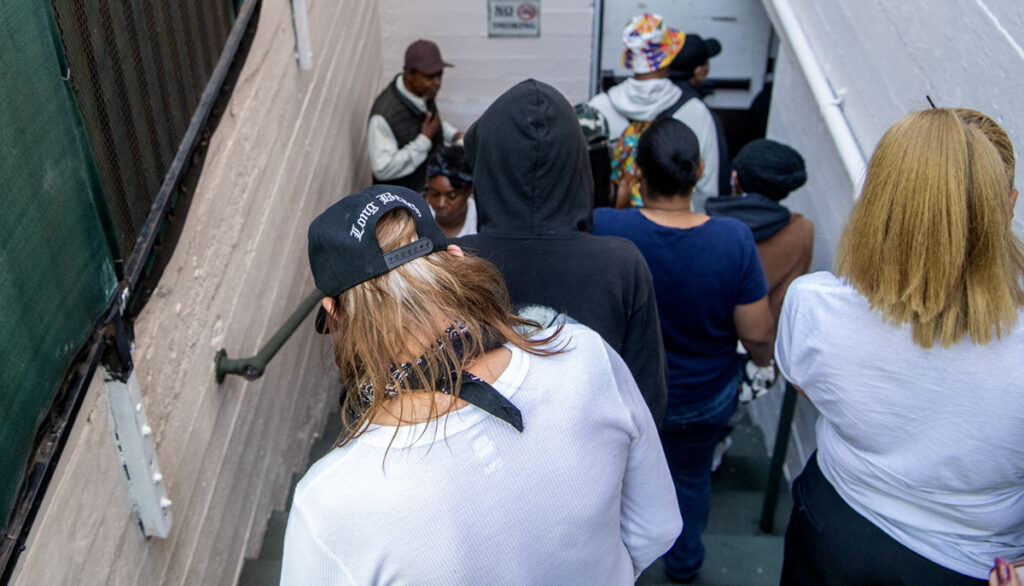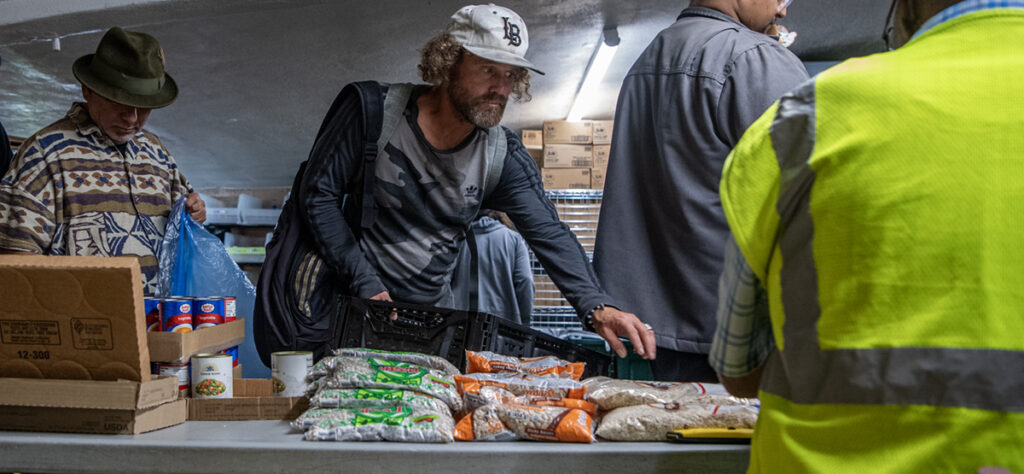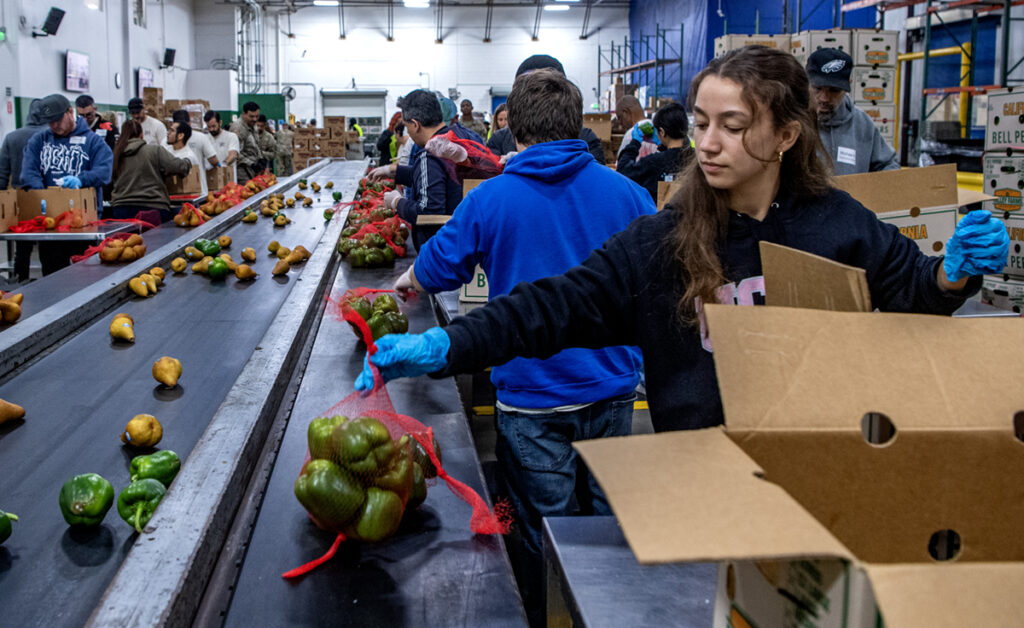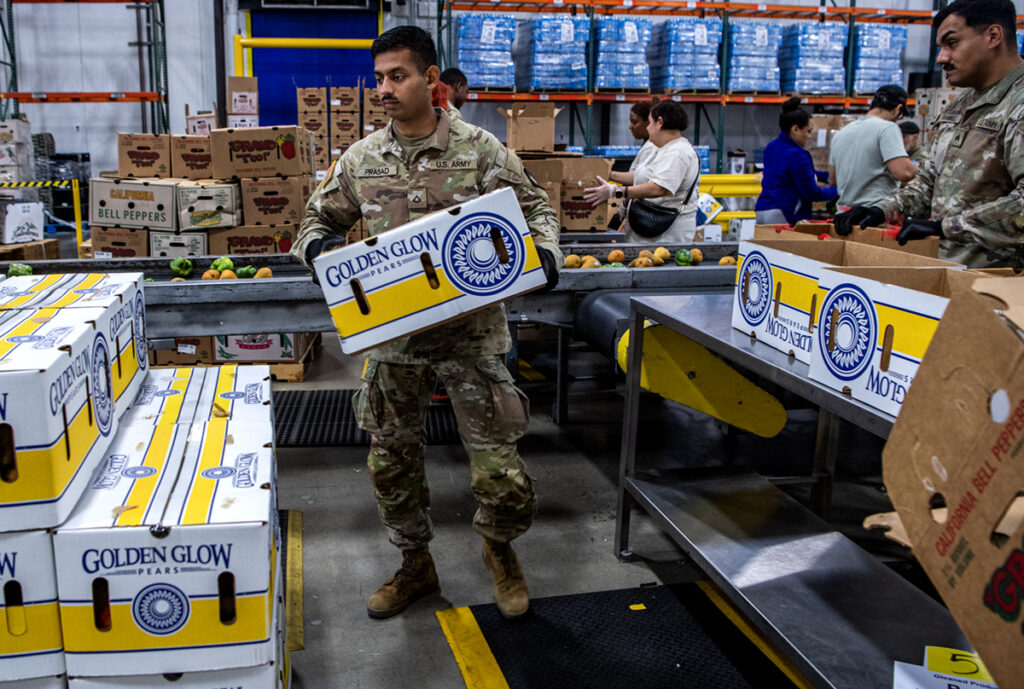First, the case workers called. Then the schools. After that, the hospitals and then city officials.
Inquiries are filling the mailbox at Noel Community Organization in Long Beach with people asking: Do they have food to spare? Yes, for now, said Lina Noel at the center. Another 285 families on Saturday came to their center — outpacing the 165 orders they completed in the month prior.
A few blocks east, the same story: visits to Catholic Charities’ local chapter are up 40% in the past two weeks, with volunteers normally focused on holiday preparations doling out 4,200 pounds of food a day.
And on the other end of town, visits to Cal State Long Beach’s food pantry have risen sharply, with Tuesday being among its busiest to date.
Thousands are lining the sidewalks and stairs to charity kitchens and pantries across Long Beach as a federal government shutdown and lapse in food stamp benefits, coupled with rising food prices and a generally high cost of living, are causing an overwhelming demand on the region’s goodwill to keep many from going hungry.

Many of those waiting are among the 93,000 in Long Beach — more than 1 in 5 of city residents — who over the weekend missed their normal food assistance payment through the Supplemental Nutritional Assistance Program, or SNAP.
For many people enrolled in the program, the losses have already proven severe, underscoring the magnitude of the Trump administration’s refusal to fully finance the program, the largest federal anti-hunger initiative.
For hundreds more, who may not fit that definition, it’s their first time standing in such a line, as the politics of hunger at the federal level, almost overnight, force difficult choices on those desperate to feed themselves and their families.
One was Delina Castillo, a 60-year-old woman who came alone to the Christian Outreach in Action center on East Third Street on a friend’s recommendation.
“I’ve mostly relied on CalFresh,” Castillo said, identifying what she’d collected from the pantry: potatoes, frozen berries, yogurt, chicken, peanut butter and sugar snap peas.
Others at the center form a line outside or await their turn along church pews until their number is called to enter the basement-turned-market.
Ernest Hall, a local veteran, sat on his walker as he waited his turn. Since the pandemic, he said, the cost of living has made everything more expensive, and not just for him.
He turned to his caregiver, Marcie Campbell, who said the rent for herself and her two kids shot up to $4,500 a month – right as her benefits ran dry from CalFresh, California’s name for SNAP.
“Now we’re struggling to pay the rent versus to eat,” she said.
Dixie Dohrmann, who runs the center, said there are 100 to 120 more people lining up at her food bank, many of whom are “families we’ve never seen before.”

After nearly a week — monthly federal food assistance benefits should have been dispersed on Saturday — some anti-hunger organizations and food banks are saying demand has begun to outpace the supply of donated or wholesale goods.
Patricia Dixon, executive director of Pools of Hope, said their pantry ran out of food in the first 90 minutes. Those arriving came from “near and far,” to get groceries, she added.
Debbie Fields, a 65-year-old woman who uses a wheelchair, traveled to Pools of Hope from Riverside on Saturday with a friend. Fields said she already ran out of the $144 monthly allotment she received in October through CalFresh, which she stretches to help feed her family.
The benefits, commonly known as food stamps, average around $189 a month in California and cost the federal government about $12 billion in this state alone last year. Nearly 5.3 million people use it statewide — 1 in 7 Californians — at a benefit of about $6.22 a day.

In anticipation of the cuts, Gov. Gavin Newsom released $80 million to bolster food banks and sent the California National Guard around the state to help pack and distribute food.
Whereas guardsmen have been seen working directly with the public in places like Bakersfield, service members in Los Angeles have largely eschewed the public eye, packaging orders inside distribution hubs.
This includes 30 soldiers split between two distribution centers in Vernon and City of Industry.
From 8 a.m. to 4 p.m., the section packs orchard boxes full of produce: grapefruit from Riverside, pears from Lodi, bell peppers from Fresno, Arroyo Grande and Le Grande.
Originally told thirty days, Lt. Chasen Schmidt with the National Guard said it’s unclear how long their station will last, with some out-of-towners staying in nearby hotels.

“But that could be extended, could be shortened, but likely extended until perhaps CalFresh gets back on track,” he said. “We’re really kind of at the whim of the state, and kind of what they want from the National Guard.”
Two federal judges previously ordered in separate rulings the U.S. Department of Agriculture to begin using more than $5 billion in contingency funds for SNAP during the government shutdown.
The White House says it’s complying, but the money will only partially fund benefits, and it’s unclear when it will arrive. What comes next is even less clear.
Without an imminent end to the already monthlong federal shutdown, the region’s cupboard of local pantries, community centers and soup kitchens — a last resort for tens of millions of hungry Americans — will surely be flexed to its limits.
Michael Flood, executive director of the Los Angeles Regional Food Bank, said their nonprofit is at full strength, a $300 million monthly operation that sends 3.3 million pounds of food donated mostly from retailers, manufacturers and farmers to pantries, churches and schools countywide. More than half of that, he said, is directed to South Bay cities and Long Beach.
Flood, who’s held the position for years, compared it to the pandemic, as well as the 35-day federal shutdown in 2018. The void left by SNAP is not one any organization can fill, he said, adding he hopes for a resolution to come about soon in Washington. With a month’s reserve of food, Flood said they’ll continue to help hold the line, for as long as they can.
“We’re gearing up for a very busy month,” he said. “(And) probably a very busy month of December, given kind of where things stand.”
If you need food, see our list of local resources here.

